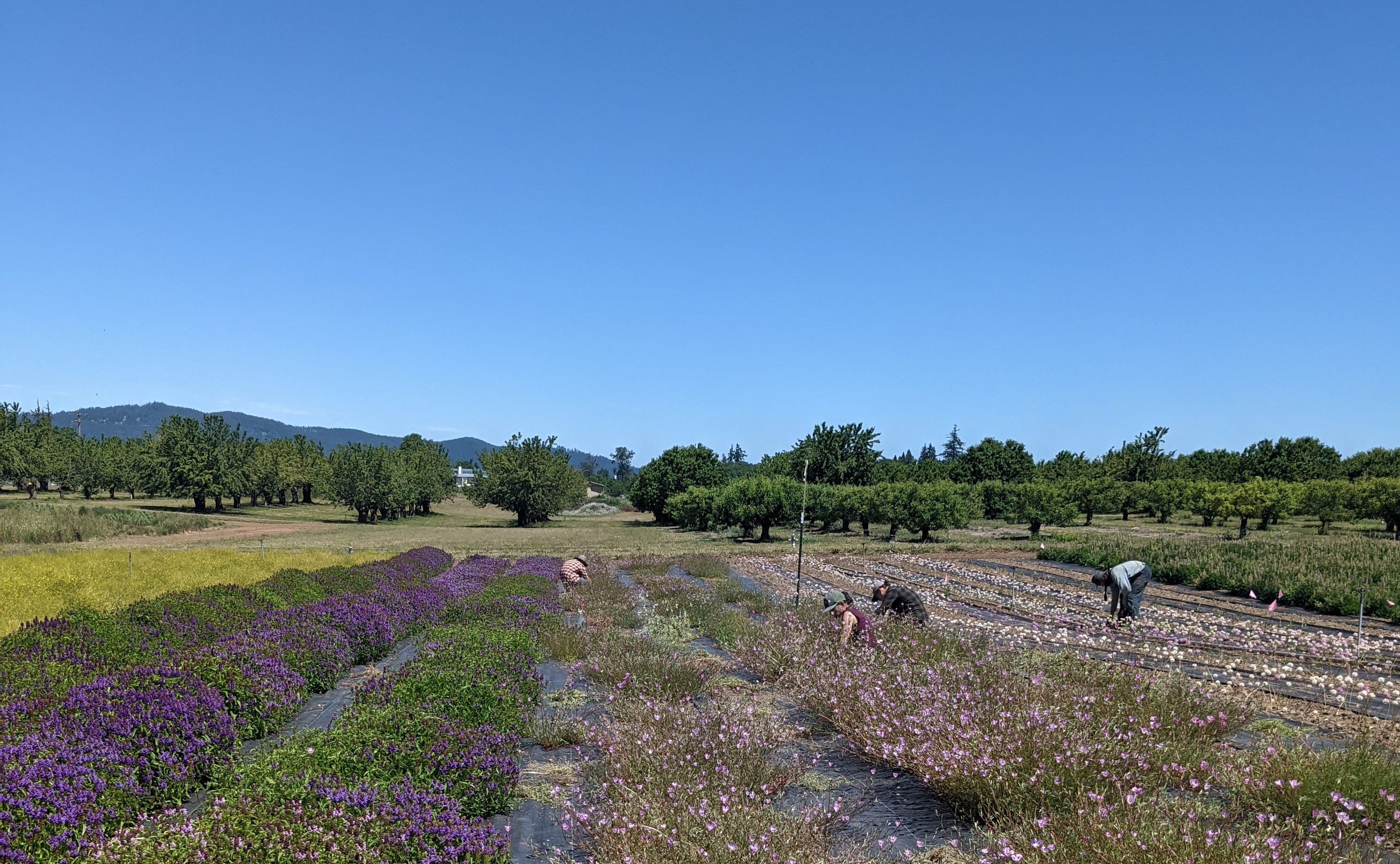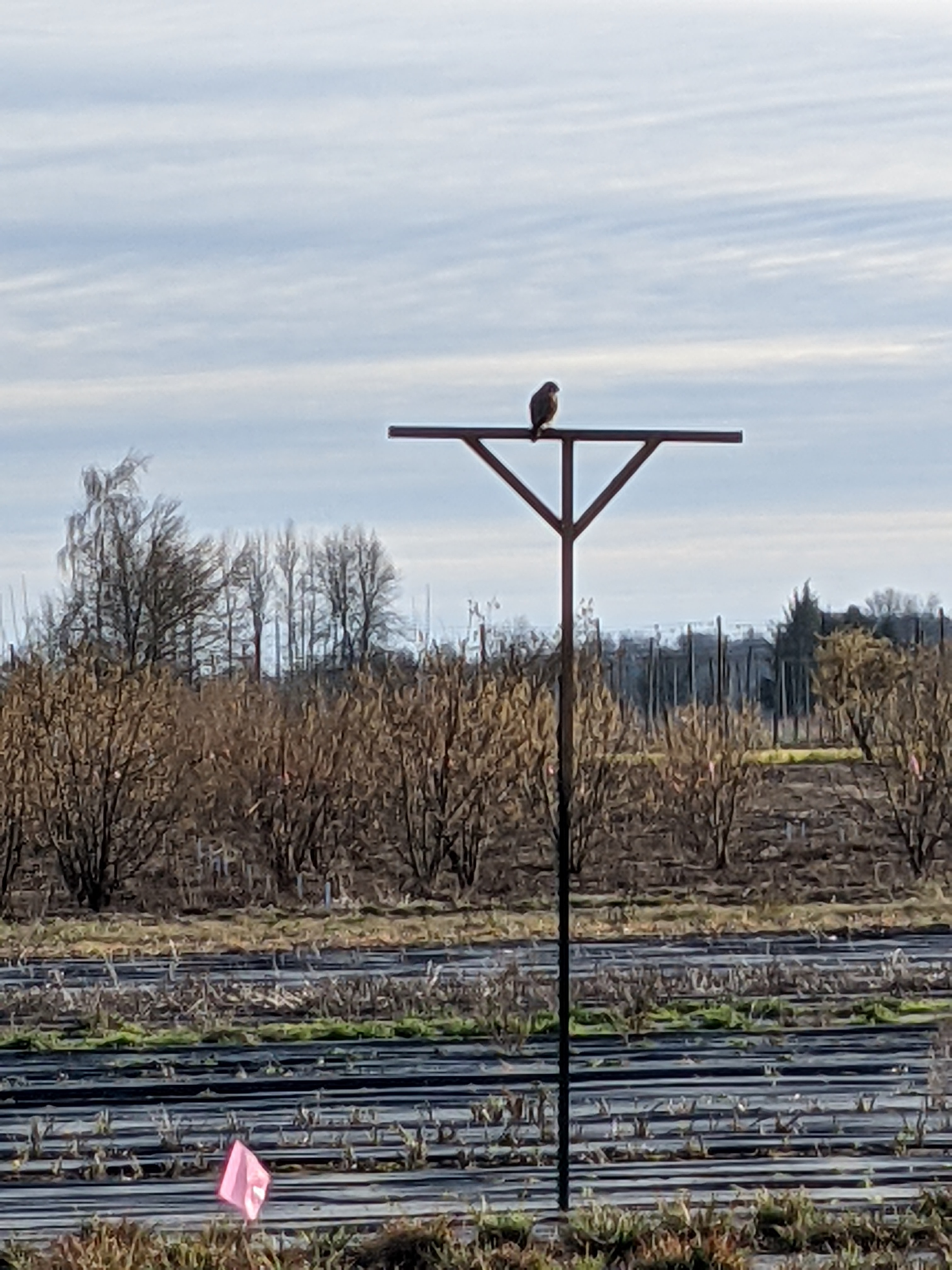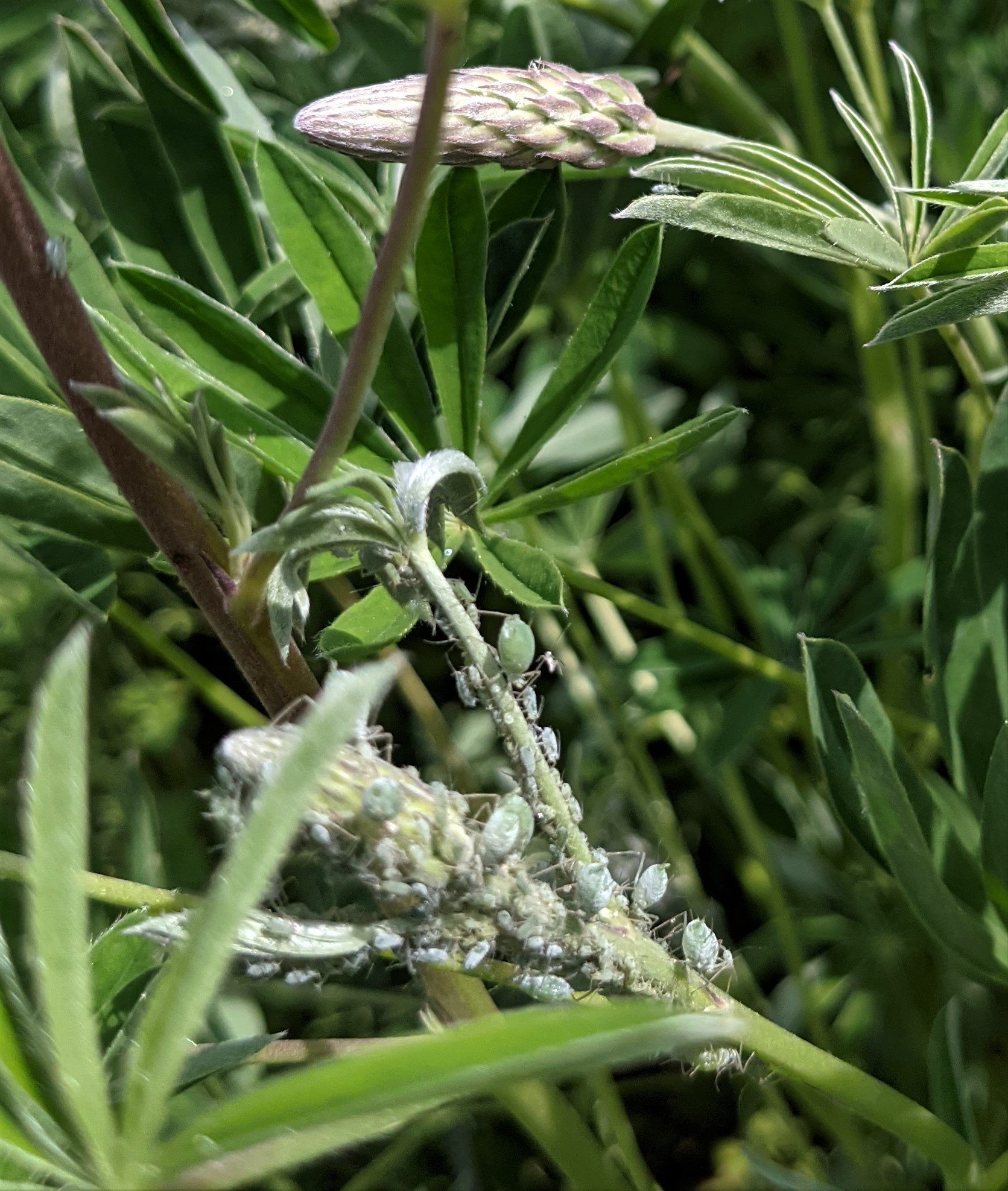
Managing pests on the farm
By Mara Friddle
June 2021
The glorious season of bloom is in full swing at our farm plots right now and the lush new growth, striking colors and delicate scents draw our admiration to the blooms. This same tapestry of sensory delights that draws our affection also draws a whole host of pests to our farm. The strategy we are implementing is called Integrated Pest Management (IPM). The following will introduce the basics of that approach (including lots of beautiful pictures, of course!).
Integrated Pest Management is a strategy that lines out all the tools in your toolbelt to combat the harmful effects of field pests, be they weeds, insects, rodents, or sleeping deer. The idea is to choose the most effective and least harmful means to combat the pest. In the case of weeds amongst the Farewell to Spring (Clarkia amoena), careful hand-weeding is required to protect the fragile blooms. Removing weeds allows resources for our plants to use and takes away alternate hosts for insect pests.
Before any treatment can be implemented, discovering the cause of the damage is required. This is done in many ways, such as keying out weed species do determine the best control and timing, using pit-fall traps to catch beetles that feed (or poop) while we are sleeping, and taking sick plant samples to the Oregon State University Plant Clinic for diagnosis and treatment plans.
Invite your friends
When managing pests, it is critical that you know who your friends are. It is common to hear the term beneficial insects, but a more inclusive term for this set of tools is natural predators. The key is to create an environment where the things that naturally keep pests in check are welcomed and encouraged. Voles and field mice are particularly damaging, so we have invited birds of prey by way of raptor posts. This simple device gives them a perch to hunt from like it is a seat at the dinner table (photo below, at left).
Protect Your Friends
A case of aphids recently popped up on a bed of Lupine (Lupinus sp., right photo above), which warranted a higher level of treatment than natural predators could provide. Chemical intervention was required. When choosing the most effective and least damaging chemical in our arsenal we were specifically trying to minimize the damage to the bumblebees who pollinate the lupine. The choice was one that leaves little residual chemical on the plants and applications were made in the late evening, after the bumblebees had finished their workday. Two applications were enough to break the aphid life cycle and reduce their population enough that ladybugs and lacewings are now keeping them in check and the bees are bumbling along!
The Oregon IPM Center is a great resource for how to develop an Integrated Pest Management program for anything from your home garden to large acreage.
Restoration
Research
Education
Get Involved
Contact
Main Office:
4950 SW Hout Street
Corvallis, OR 97333-9598
541-753-3099
[email protected]
Southwest Office:
1202 Parkway Dr. Suite B
Santa Fe, NM 87507
(505) 490-4910
[email protected]
© 2024 Institute for Applied Ecology | Privacy Policy


